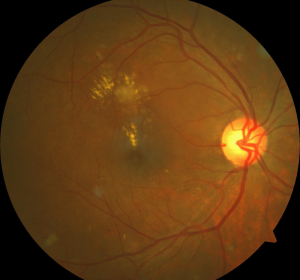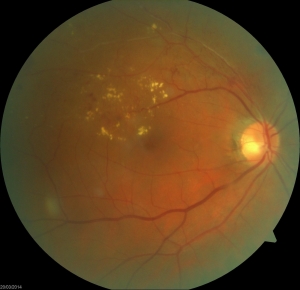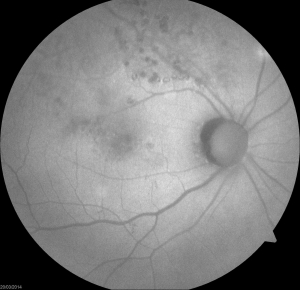Sustained and uncontrolled blood glucose levels eventually cause damage to the structures of the eye called diabetic retinopathy or diabetic maculopathy. These changes can be by an eye doctor either by special scans and photographs or by examining the eye with special pieces of equipment.
Treatment
For early or moderate diabetic retinopathy the best treatment is good control of diabetes and control of risk factors.
Advanced diabetic retinopathy like diabetic maculopathy (with sight threatening features) and proliferative retinopathy usually require laser treatment.
In advanced proliferative retinopathy, laser treatment may not be possible and a type of eye surgery called vitreous surgery may be required.
Laser or injection treatment cannot replace good diabetic control. If your diabetes, blood pressure and cholesterol remain out of control, laser or injection treatments will fail and you may lose vision.
Laser treatment
The type of laser treatment used to treat diabetic retinopathy is known as photocoagulation. Photocoagulation involves using a laser to burn away any abnormal blood vessels or abnormal retina which may affect the normal retina.
Photocoagulation reduces the risk of severe visual loss over 5 years by 50%.
More than 50% of people who have laser treatment for diabetic retinopathy notice some difficulty with their night vision, and 3% notice some loss of peripheral vision.
Laser treatment can be of different types
- Pan retinal retinal photocoagulation or scatter laser treatment
- Sector retinal laser treatment
- Focal laser treatment
- Grid laser treatment



Injection treatment:
Injections can help in certain types of diabetic retinopathy by reducing leakage in the retina. This type of retinopathy is called diabetic maculopathy.
Initial stages of diabetic maculopathy may be treated with laser.
However in some instances or later stages, injections may be more helpful. The injections of drugs called Ranibizumab (Lucentis®), Bevazicumab (Avastin®), Afiblicept (Eyelea®) are anti VEGF injections. These are used to reduce the swelling in the central retina. They need to be given on a multiple injection basis. They are most commonly used drugs in the world for treatment of diabetic maculopathy.
Triamcinolone, Flucinolone acetate (Illuvien®) or dexamethasone (Ozurdex) are steroid injections or implants. Triamcinolone lasts for about 6 weeks, Ozurdex about 6 months and Illuvien about 1 to 3 years. These are usually used in special circumstances.
You should talk to your doctor about these as each of these will have risks and benefits, which will need to be considered on a case to case basis.
Seek medical advice if you experience any new eye problems following treatment.
Disclaimer: This information leaflet is produced to help increase awareness regarding diabetic retinopathy. It is not intended to replace professional medical advice or to provide advice in any special individual circumstance. Please seek expert medical advice regarding your specific medical condition.
